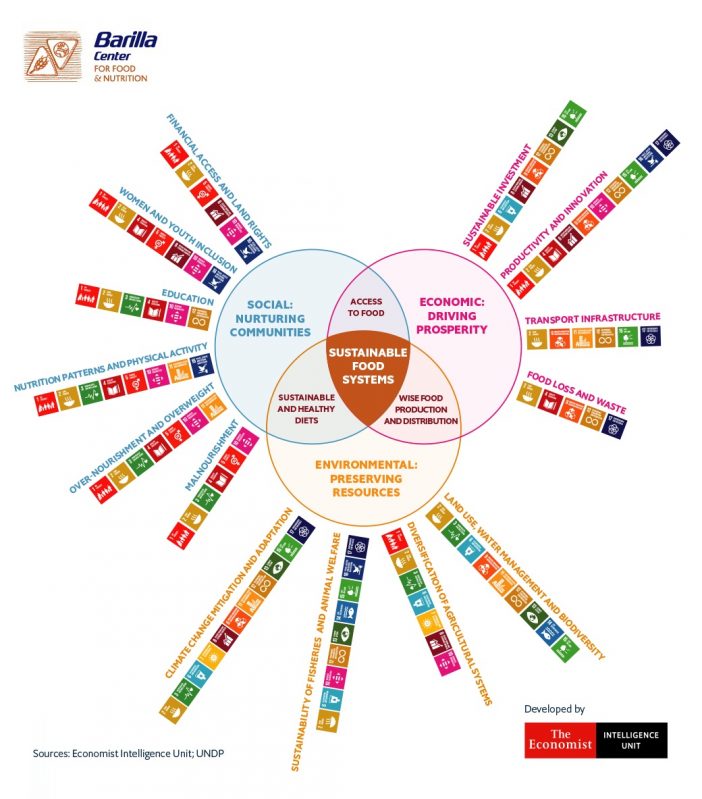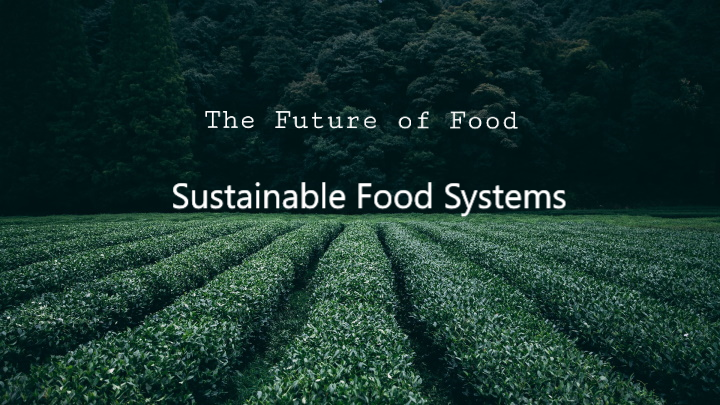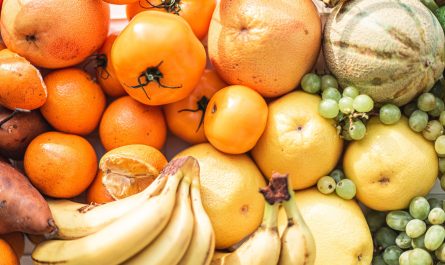On my previous blog-post about food systems I tried to introduce the reality of the process our population relies on on in order to be fed. I also introduced briefly the sustainable development goals (SDG’s) of the UN. There is still a lot to be done in order for us to tackle the problems generated by our current food production processes.
To highlight again the impact that agriculture has in our planet, here a couple of numbers: agricultural activities are estimated to account for up to 30% of global greenhouse gas (GHG) emissions and 70% of global water use, The good news is, there might be solutions for this problem, and the measures needed should address the sustainability of the global food system.
The Food and Agriculture Organization of the United Nations (FAO) defines a sustainable food system (SFS) as a food system that delivers food security and nutrition for all in such a way that the economic, social and environmental bases to generate food security and nutrition for future generations are not compromised.
This means that:
- It is profitable throughout (economic sustainability);
- It has broad-based benefits for society (social sustainability); and
- It has a positive or neutral impact on the natural environment (environmental sustainability).
A sustainable food system goes in line with the United Nations’ Sustainable Development Goals (SDGs).
The not-so-self-explanatory infographic below illustrates the social, economic and environmental dimensions and demonstrates the link between sustainable food systems and making progress across the SDG’s.

Given the interconnected economic, social, and environmental aspects of food systems, we can clearly see, food is a common thread connecting all SDG’s.
But how will we be able to achieve these goals?
There is huge discrepancy with what different countries are struggling with, in some of them income inequality, poverty and/or lacking of infrastructure are such problems that food security and water supply are not guaranteed for everyone, while others should be trying to promote healthy diets in order to combat the spike in obesity.
The report FIXING FOOD 2018 incorporates the latest findings of the Food Sustainability Index which uses the pillars nutrition, sustainable agriculture and food loss and waste, and highlight how food sustainability can help to meet the SDG’s and the objectives of the Paris Agreement to combat climate change and reduce our carbon footprint. These pillars are closely interlinked so only holistic solutions and best practices, joined-up thinking and collaboration by those working at every stage in the global food chain are the most efficient and effective option.
Sustainable agriculture has the challenge of reducing losses and minimizing the environmental footprint of food production, while producing nutritious and sustainable food for all.
Best practices include “sustainable intensification”, which calls for finding methods for increasing agricultural output while conserving resources used and reducing pollution and greenhouse gas emissions. Innovations such as soil sensors and satellite checking help to use resources more efficiently through precision farming
Here is a little example of what is possible with digital agriculture explained by Michael Robertson at TEDxUWA a couple of years ago:
There is also an increasing recognition that traditional farming and the practices found in agroecology also have great potential. This is relevant because smallholder farmers produce 70% of the world’s food.
We know that the food produced now would be enough to feed the world population. So we should definitely address the problem of food loss and waste as well. Along the supply chain and after it reaches consumers, food is being thrown away. Solutions for this include investments in storage facilities and transport infrastructure, but also training for farmers in best practices in harvesting and storing crops. Digital technologies are also helping to connect sellers and buyers of agricultural produce. And in consumer markets, everything from more effective food labelling, (e.g. the Too Good To Go initiative and label “often good after”) to awareness-raising education programs and food donations is being used to prevent food from going to waste.
Measures to be taken probably don’t work without including or even starting with applicable policies and regulations. The romantic and neoliberalist notion that the free market through businesses and individuals would assume measures by themselves has been noticeable and definitely not enough. Governments need to create and spread the regulations and incentives, and also support good farming practices.
Best practices should:
- channel and apply ideas that are innovative, replicable, scalable, financially feasible and that make a meaningful impact on the sustainability of the global food system.
- include all players in the supply chain, from governments to the private sector, smallholder farmers, academia, international organizations and consumers.
With the complexity of the construct of our food system and its relationship to social, environmental and economic health, all players need to be engaged. Solutions need to be holistic and all sectors have to be involved in order for us to achieve sustainability in our food system.
In my next post I will be discussing new technologies and innovations impacting our food systems. Stay tuned!
Sources:
Food and Agriculture Organization of the United Nations (FAO). (2018a). Sustainable food systems. Concept and framework.
Food and Agriculture Organization of the United Nations (FAO). (2018b). The future of food and agriculture Alternative pathways to 2050.
Murray, S. (2018). FIXING FOOD 2018: Best Practices Towards the Sustainable Development Goals.



